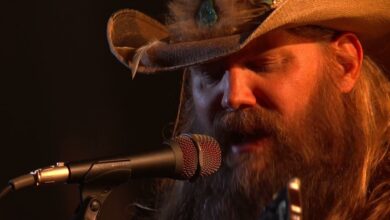Senior Music Enthusiasts Revitalized by Procol Harum’s Legendary Tracks
Procol Harum emerged as a significant force in the rock music scene of the late 1960s, carving out a niche that blended rock with elements of classical and avant-garde artistry. Their music resonated with the era’s burgeoning counterculture, which sought to explore profound themes and musical innovation. The band was not content merely to replicate the sounds of their contemporaries; instead, they sought to expand the possibilities of rock music, infusing it with a sense of sophistication that was largely unprecedented at the time. This ambition made Procol Harum not just a band but a trailblazer, pushing the envelope and setting a precedent for artistic expression in popular music.
The lyrical contributions of Keith Reid provided a crucial counterpoint to Gary Brooker’s melodic sensibilities. Reid’s words often delve into existential themes, utilizing a rich tapestry of imagery that evokes multifaceted interpretations. For instance, “A Whiter Shade of Pale” is often seen as an exploration of lost love and wistfulness, but its lyrics also invite personal reflection, allowing listeners to draw their meanings from its evocative phrases. This layered approach to songwriting has allowed Procol Harum’s music to remain timeless, as each generation finds their interpretations within the band’s work.
Moreover, the band showcased technical prowess through their instrumentation and arrangements. Their early work occasionally featured arrangements that incorporated classical motifs and complex time signatures, elements more commonly associated with progressive rock. This approach allowed them to create a unique sound that appealed to both rock enthusiasts and classical music aficionados. The use of the Hammond organ became one of their hallmarks, the instrument’s lush tones adding an otherworldly quality to songs that often delve into introspective and surreal themes.
Throughout their career, Procol Harum has embraced experimentation, not just in their musical compositions but also in their collaborations. The band’s willingness to work with different composers and orchestras has broadened their sonic landscape. The renowned partnership with the Danish National Concert Orchestra in 2006 exemplifies how Procol Harum has actively sought to redefine their music, taking bold steps that showcase their adaptability and artistic integrity. This concert, which was later immortalized in a live album, demonstrated the emotional depth that orchestral arrangements can bring to rock songs, further enriching the experience for listeners.
Live performances have always been a significant aspect of Procol Harum’s artistry. Gary Brooker’s charismatic stage presence, paired with the band’s collective musicianship, has captivated audiences around the world. The intricacies of their studio recordings translate beautifully in a live setting, where the energy of the musicians can merge with the emotional reactions of an audience. This symbiotic relationship is central to their concerts, with moments of improvisation allowing the band to connect on a deeper level with fans.
As the years went on, Procol Harum faced challenges typical of enduring musical acts, including shifts in public taste and internal dynamics. Yet, the foundational elements of their music—Brooker’s poignant piano work and Reid’s evocative lyrics—remained steadfast. The unwavering dedication to their artistic vision allowed them to maintain a loyal fan base while also attracting new listeners who discovered their music through film soundtracks, cover versions, and classic rock radio.
Gary Brooker’s role as a leader is pivotal, not only for Procol Harum but also as a figure within the broader music community. His friendships and collaborations with other musicians showcase his generosity and open-mindedness, qualities that have endeared him to his peers and fans alike. Over the decades, he has participated in various projects and selfless endeavors, giving back to the community while continuously contributing to the rich tapestry of rock music.
Throughout Procol Harum’s discography, various albums reflect their artistic explorations. Whether through the exploratory nature of “A Salty Dog” or the complex arrangements found in “Broken Barricades,” the band’s albums reveal a consistent commitment to creativity. Each release showcases their evolution, marked by a willingness to take risks musically. This openness to experimentation is a testament to their respect for both the rock genre and the myriad influences they integrated into their sound.
As they have traversed through time, Procol Harum exemplifies the capacity for music to serve as a mirror reflecting changing societal values and emotions. Their enduring appeal stems not only from their innovative sound but also from the profound emotional undercurrents that coursed through their songs. In a world where music often serves as a background to life, Procol Harum’s work demands active engagement, inviting listeners to explore and reflect on their own experiences.
In conclusion, the legacy of Procol Harum is multifaceted, rooted in an ambition to merge diverse musical influences while conveying deep and resonant emotions. The band’s ability to reinvent itself, to collaborate with orchestras, and to engage deeply with their audience reflects a broader narrative about the evolution of rock music itself. As artists continue to draw inspiration from their groundbreaking approach, Procol Harum will undoubtedly be remembered not only for their iconic hits but for their pioneering spirit that dared to reshape the musical landscape. The continued relevance of their work is a reminder of the timeless nature of art and its power to connect us across generations.





